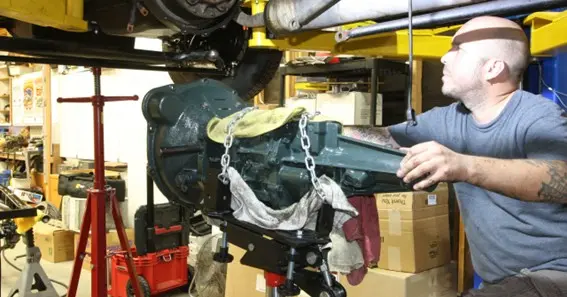The Ford Model A, produced between 1927 and 1931, was a significant advancement over its predecessor, the Model T. One of its notable features was the introduction of a conventional three-speed manual transmission, marking a departure from the Model T’s planetary gear system.
The Three-Speed Manual Transmission
The Model A was equipped with a sliding-gear transmission, commonly referred to as a “crash box” due to the lack of synchronizers. This design required drivers to master the technique of double-clutching to ensure smooth gear transitions.
Gear Ratios
The transmission offered three forward gears and one reverse gear with the following ratios:
- First Gear: 3.12:1
- Second Gear: 1.85:1
- Third Gear (Direct Drive): 1.00:1
- Reverse Gear: 3.12:1
These ratios provided a balance between acceleration and top speed, catering to various driving conditions of the era.
Transmission Specifications
- Gear Material: Chromium alloy steel
- Transmission Case Length: 6.560 to 6.565 inches
- Oil Capacity: 1.5 pints
The use of high-quality materials and precise engineering contributed to the durability and reliability of the Model A’s transmission system.
Driving Experience
Operating the Model A’s transmission required skill, especially given the absence of modern synchronizers. Drivers needed to coordinate the clutch and throttle carefully, particularly during gear shifts, to prevent gear clash and ensure a smooth driving experience.
FAQ
1. What type of transmission did the Ford Model A have?
The Ford Model A was equipped with a three-speed unsynchronized manual transmission, also known as a sliding-gear or “crash” gearbox.
2. What were the gear ratios for the Ford Model A’s transmission?
The gear ratios were 3.12:1 for first gear, 1.85:1 for second gear, and 1.00:1 for third gear (direct drive).
3. How much oil did the Model A’s transmission hold?
The transmission had an oil capacity of 1.5 pints.
4. What materials were used in the construction of the Model A’s transmission gears?
The gears were made from chromium alloy steel, ensuring strength and longevity.
5. Did the Ford Model A’s transmission have synchronizers?
No, the transmission was unsynchronized, requiring drivers to use double-clutching techniques for smooth gear shifts.










